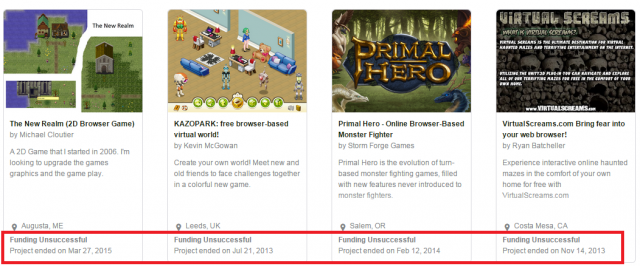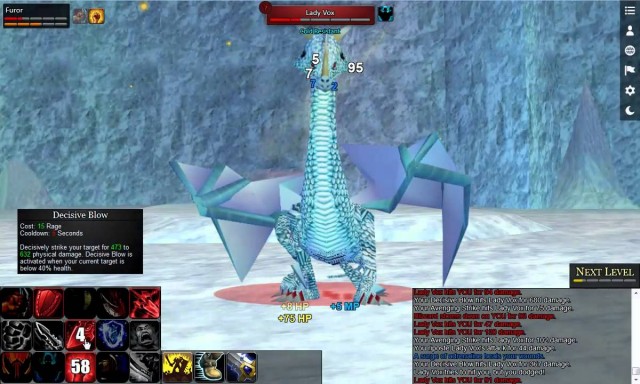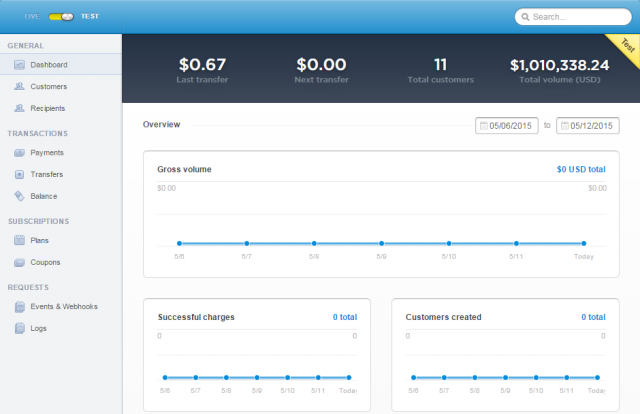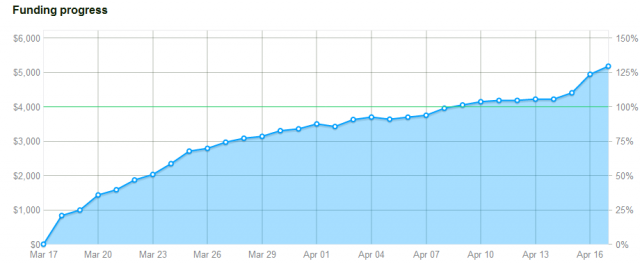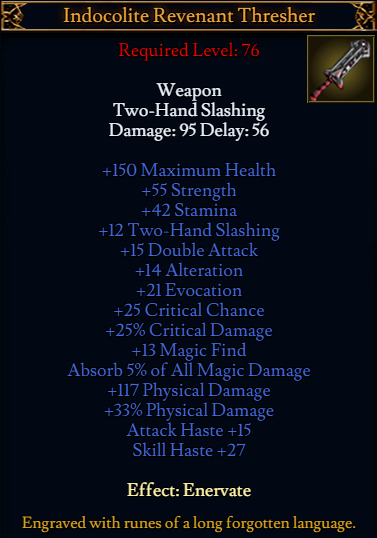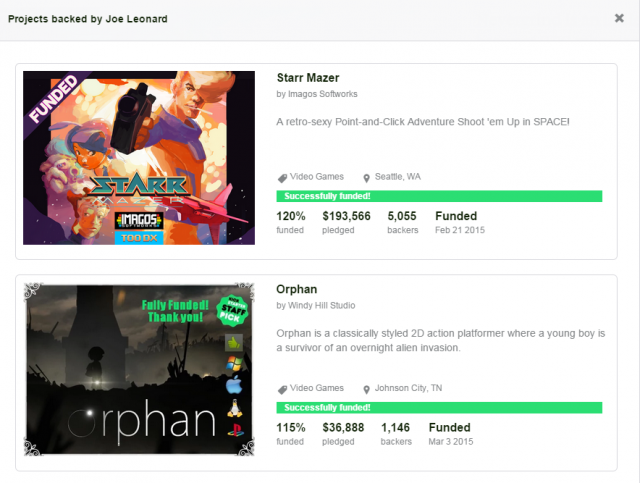Successfully funding a browser game on Kickstarter is an ominous proposition. The search results for “browser” on Kickstarter is like a graveyard of game development aspiration. A paltry 13% of results were successfully funded. This stands in stark comparison to a Kickstarter success rate of 33% for all projects in the game category.
In fact it’s even worse if you measure based on the keyword “HTML5“, which clocks in at an abyssmal 7% success rate. In fact the only project that succeeded was Tough to Kill, which was funded for a humble $720.
So how does one successfully fund a browser game? After all, browser games are an exciting frontier where you can play on any device with a browser, including mobile devices. So your potential user base easily exceeds 3 billion. And browser games have the advantage of automatically integrating with the web, making it simple to leverage social media platforms, forums, mediawiki, wordpress, paid advertising, and organic search results. The barrier to entry to your browser game is as small as entering the URL into a browser’s address bar. No other platform can brag about such a low barrier to entry. No installation required and batteries are included. It’s a big deal!
But if you’re an unknown nobody aspiring to create a browser game and attract an audience, it seems like a daunting task. How do you attract an audience? Where do you begin? How can you possibly compete against giants in the gaming industry? It’s not easy, but I assure you it can be done. Particularly if you have more time and experience than I do.
Nevergrind is a browser RPG I developed starting in September, 2012. I am an unknown nobody with no industry sway whatsoever. I emphasize this fact not to be self-deprecating, but to establish that it is possible to overcome obscurity. It is easy to be discouraged when competing in an industry so heavily influenced by kingmakers in the gaming media. This game was entirely developed in the basement of my humble town home. Nevertheless, I had a clear vision of what I wanted to create. I wanted to combine Progress Quest and Everquest into a single-player browser RPG and combine elements from some of my other favorite RPGs.
Years later, I managed to launch a successful Kickstarter campaign. Despite being successfully funded at 129%, it is obvious that I made a lot of mistakes. So heed my advice and benefit from my experience. Here are my top 10 tips for navigating your browser game to Kickstarter success:
#1: Establish an Audience Long Before You Launch
If you have no audience, this one is really important. From day 1 Nevergrind was developed publically, bugs, warts, and all. Despite the horror of developing my game publically, this was key to developing an audience in the early days. A tiny handful of users trickled into our forums and reported bugs and even enjoyed playing the game in its earliest days, despite being barely functional. Try to develop the earliest parts of the game so that those levels are fully playable, even if you’re only using basic programmer art.
I also made quite a lot of youtube videos talking about latest features, boss fights, and the game’s technical development. Though none of these videos achieved viral fame, this was absolutely crucial to Nevergrind’s modest success later. Eventually, Pharmakos from our forum took it upon himself to share the game at rerolled.org. He made a high-quality post with links to the videos and a favorable, detailed description of the game. This was probably the single most important thing that ever happened in the years prior to the Kickstarter launch. To this day I still receive considerable referral traffic from this forum.
The most important detail, which can be easy to overlook, is that this post was not made by me. I guarantee if I made this exact same post using my own account, the post would not be received well since it would appear to be self-promotion. Only an established member of the community with a long history of posting in the forum could achieve such a level of success.
#2: Clearly Define Your Target Audience
In the early days, Nevergrind was developed as an EverQuest fangame with no lofty aspirations whatsoever. I wasn’t planning to offer accounts, monetize, or advertise. Over time I became more confident in my web development skills, so I decide to adjust my course, develop my own intellectual property, and redesign the game. Nevertheless, my core audience was still the EverQuest community due to its past assocation. For similar reasons, “50 Shades of Grey” is still heavily connected with the “Twilight” demographic.
For this reason I spent a lot of time and energy targeting every EverQuest community that I could think of. Project1999, EQNext, Allakhazam, and even Pantheon were all targets I considered.
Besides simply appealing to folks hungry for EverQuest nostalgia, I also targeted any community that was interested in playing browser RPGs. Reddit and forums were two of the best places that I found, though your milage may vary!
To summarize this point, try to cleanly identify the genre of your game and what type of game is most similar to yours. Find the communities that enjoy those similar games and share the game with them. Note that since I said “share” that sounds a lot better than “promote”! But in reality, yes, you are self-promoting. It’s an ugly job, but you have to do it.
#3: Keep Your Costs Under Control
When you design your game, try to keep its scope as small as you can while still being a complete game. Yet, if at all possible, design it so that you can easily scale the game in the event of mega viral success. Bear in mind that some types of games will not allow for easy scalability. I think RPGs are quite good at this as you can always increase the number of levels, add new difficulty levels, add new zones, add new challenges, and so on.
I personally spent about $6,200 developing Nevergrind, and I am exceptionally lucky that I am on pace to break even in less than one year. Kickstarter was a big boost and it continues to earn some revenue via Stripe and Paypal payments for Never Crystals, a form of IAP.
Honestly, despite my success, I think Nevergrind was way too ambitious and the costs were way too high for a first-time game developed by someone with no brand recognition or experience. I would recommend a much simpler game and a smaller budget around $250 – $1,000. According to Gamasutra, 57% of indie games make less than $500. Budget yourself accordingly. Also note that most successful indie game developers have previous experience in the industry.
You can keep costs low by leveraging global talent via websites such as Upwork. You can find a lot of free music and art on websites like OpenGameArt. Once in a while you’ll even see a post on reddit about free game assets and they’re easy to find using Google. I found a lot of cool sound effects for a reasonable price on a website called Premium Beat.
#4: Set a Realistic Funding Goal By Studying Your Competition
Initially I considered a goal of $6,000, but I later determined that was too high. Then I considered $5,000, and, after some deep thought, I determined that was also too high. Ultimately I settled on $4,000. It doesn’t sound like much, but it is, in reality. That means with an average pledge of $25, you would have to convince 160 people to back your campaign. That’s a lot of random people to persuade. You might be thinking that doesn’t sound like much, but I promise that it is. Actually convincing people to pick up their credit card on your behalf is a monumental achievement. Do not underestimate its difficulty.
Fortunately I believe I picked the perfect amount for my campaign. We ultimately made it to 129% of our goal, clocking in at $5,184. The best way to determine what your goal should be would be to compare yourself to your competition. I decided to use Kickstarter’s advanced discovery feature to determine a reasonable goal. I searched for succesful campaigns with the keyword “browser” and here’s how the competition stacked up:
- Horse World Online – $5,258
- Mars Frontier – $10,395
- Evocality – $8,403
- Town of Salem – $17,190
- Worlds Quest – $4,161
- Warbarons – $6,105
- Conclave – $75,885
- Grapple Force Rena – $8,250
- Sunshine Compound – $20,129
- Flight Rising – $38,557
- Chosen Space: Relaunched – $10,205
- Tough to Kill – $720
- BittyPets – $12,116
- Marvel Horse – $3,045
Quite a list, and as you can see, quite a variety of games with varying budgets. Among the 87 failed browser games, these are the only 16 games, not counting Nevergrind, that managed to get fully funded.
The important takeaway is to compare yourself in scope and quality to your peers and logically determine what kind of goal your project should have. The absolute closest to Nevergrind was probably Words Quest, which earned $4,161. It turns out that $4,000 was perfect for Nevergrind as well.
#5: Offer a Creative Selection of Rewards
If your rewards aren’t interesting, people aren’t going to get excited to back your campaign. Spend a lot of creative energy making the rewards interesting. Aside from the cupcakes, I decided against shipping any physical rewards at all. Not even coffee mugs! On second thought I would really like a Nevergrind coffee mug. Oh well…
Nevergrind is an RPG, so I offered a buffet of rewards appropriate for an RPG: design a monster, design an item, design a zone, legendary rewards, legendary armor, special items, remote bank and merchant access, design a race, design a class, and more! I was pleased with this aspect of my campaign. I thought I did a good job offering a nice variety and I made the awards cumulative, so it was a great value for backers thinking about upgrading.
I also gave a funny name to each reward tier. It’s more fun to say you’re a “Legend” backer instead of I’m a $100 backer. I also let users claim forum titles based on their pledge amounts. These are all fun ways to help develop a sense of community and involvement.
#6: Be Prepared to Make Creative Adjustments to Your Rewards
From the very first day I was making changes to the rewards due to the overwhelming demand of the reward tier. Initially I capped the limit to five, but I immediately saw that this was a huge mistake when it sold out on the first day. This is something that I did not anticipate. Despite the risk of irritating the legend backers, I decided to make it an unlimited reward tier. Ultimately this risk paid off as 41% of my pledges came from people that purchased legendary items.
Due to the popularity of legendary items, I even decided to create a second tier that included legendary weapon and armor at $135. On top of that I decided to include legendaries with all tiers above $135. This didn’t exactly pay dividends, but I think using a cumulative reward system is a good idea for a browser game focused on in-game rewards.
My most popular tier was the $40 tier which included the complete game and several free items and in-game convenience features. Halfway through the campaign it dawned on me that some players may not care to have any of the items and may instead want to get the full game only. At that time I decided to offer the full game unlocked for $24 which also became a popular option. The important takeaway from this is that some folks may not care for your in-game doodads. Keep the full game available for purchase without forcing your backers to buy doodads as well.
#7: Don’t Expect the Media to Care
There are quite a few lists imploring you to contact each and every media outlet in existence. Despite the popular wisdom, I felt that this was a complete waste of time. And quite frankly I don’t like groveling to anyone for attention. Nevertheless, these are the kingmakers of the industry that can make or break your game. I think focusing on the media too much may hinder you as a small indie game developer.
Instead, focus on the niche community that you are attempting to cajole. Post in their forums. Participate in their discussions. Routinely write blog articles about big events going on in their community and link to them. Manage a subreddit for your game and link to articles and news about your niche community. Over time you will build an audience.
I don’t mean to say it’s a complete waste of time for everyone. Your milage may vary! After all I did have an interview with the Cliqist, an article on Indie Game News, and a nice article at Indie Game Magazine. These articles referred maybe 1% of my funding. Nevertheless, it’s cool to be featured in the media. Your Mom will think it’s completely amazing! However I will mention that Rerolled continues to drive more referrals than all of these articles combined.
#8: Leverage Your Personal Network
Friends, family, co-workers, and neighbors are all realistic possibilities of people that will back your campaign with actual money. I’m not exactly the most gregarious guy in town, but even with my modest personal network, I managed to receive $1,030 in backing from people I know in real life. That’s close to 20% of my project’s overall funding! So don’t fail to ignore your personal network. Tell them about your project and convey your excitement for its future. Talk to them in real life and tell them about the latest feature you just added, the latest bug fix, or the latest video you uploaded to YouTube! You must be able to convey excitement about your own game. Otherwise why should anyone have any emotional investment in your project at all?
Be sure to leverage platforms like Facebook, but don’t be surprised when every single person in your family doesn’t make a pledge. In fact, just remove all of your expectations completely. Asking people to register for Kickstarter and figure out the rigamarole involved is asking quite a lot for the average person—particularly if they’re not tech savvy. And if they pledge, don’t ever ask why they didn’t pledge more. Doing so is extremely tacky. Be thankful even if your own Mother pledges $1. Personal finances are a sensitive matter for a lot of people. In fact, I generally suggested to donate $1 to “follow along” with the campaign updates via email. Invariably, nobody pledged $1, though I would have been perfectly fine with that.
#9: Leverage the Power of Google Images
Here’s a pretty cool tactic to find places to promote, er, share your browser game. Find Kickstarter campaigns similar to yours and download their images to your desktop. Open up google images and drag the images into the search bar and see what results pop up. In addition you can add the word “forum” to the search bar for more specific results. Pretty cool!
In a lot of cases you can discover where they promoted their game and follow in their footsteps. I had the most success following Town of Salem by Blank Media Games. I saw them successfully post in forum after forum using very similar formats using a high-quality post explaining their game to a diverse array of game-related forums.
Of course, always consider whether the forum is relevant enough to your browser game before your post! And some forums don’t take kindly to self-promotion… or was it called sharing? Sharing sounds so nice!
#10: Support Similar Kickstarter Campaigns
If people see some random guy launching a Kickstarter game that has never backed a campaign before, it could possibly hurt your campaign. So just go ahead and look around and make at least a few pledges. In fact, back campaigns similar to yours! After all, a rising tide lifts all boats, so get out there and back some campaigns! Find campaigns both big and small. There are a lot of exciting projects out there. If you really believe in the indie cause, Kickstarter is a great place to demonstrate your commitment to the indie community.
As an added bonus it will help you understand the Kickstarter culture and how the website works from a backer’s perspective.
Summary
Successfully funding a browser game on Kickstarter is no minor feat, but if you budget wisely, manage the scope of your game, know and target your audience, and design an effective campaign, it’s certainly a reasonable goal. Nevergrind is a great example of a browser game succeeding despite no industry connections, no web development experience, and no name recognition. Not to mention I work full-time, I am married, and I have three children younger than four. My amount of free time is meager compared to most. That’s why I am quite confident that others can excel far beyond what I have managed to achieve.


